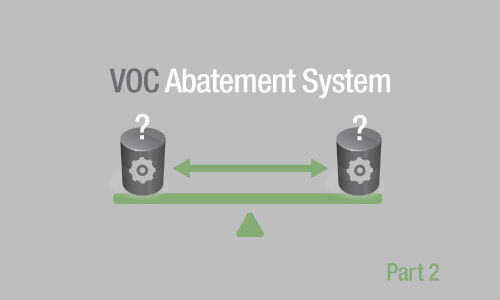In part 2 of this series, we’ve defined a step-by-step checklist of criteria you can use to develop a list of specifications and project requirements you’ll need when submitting a formal RFQ (request for quotation) to VOC abatement system manufacturers, just as you would when acquiring sophisticated production equipment.
Consider the 10 important criteria to consider when developing your request for quotation:
-
-
Determine the Total Number of Emission Points (Exhaust Stacks) to be Controlled
 In most VOC abatement technologies, an atmospheric/bypass tee-damper is required at each emission point.
In most VOC abatement technologies, an atmospheric/bypass tee-damper is required at each emission point.This is an important consideration because the system’s electrical control design changes, based on the number of emission points that need to be controlled.
Also consider your growth expectations over the next 2-5 years. Planning for facility growth now can prevent costly upgrades in the future. The best approach is to install a system designed to handle additional capacity now, rather than installing a second system in the future.
-
-
-
Hourly Operation Requirements
Estimate how many days per week and hours per day, your system will need to operate. Equipment design and technology could differ based on time requirements for operation.
-
-
-
What VOC/HAP Destruction Efficiency Percentage Does Your Air Permit Require?
Your air permit’s VOC destruction percentage determines both the operating temperature and the amount of catalyst needed (in catalytic models) and chamber designs (in thermal models).
-
-
-
Determine the Exhaust Rate and Temperatures Needed
Define the exhaust rates and temperatures for each emission point. These considerations are critical factors for sizing the unit, dampers and determining the necessity for ductwork insulation. Temperature is also used to calculate estimated operating costs.
Next, consider the heat source needed for emission points. When gas-fired burners are used for controlling emission points, NFPA regulations mandate the method of purging and bypass damper control. If steam or hot oil is used as the heat source, process control/bypass tee-dampers might not be required at each emission point.
-
-
-
List the VOC Types and Quantities Being Used
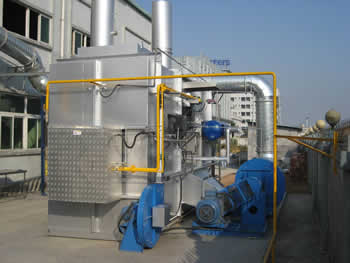 VOC types and quantities are an important factor when selecting a VOC abatement system.
VOC types and quantities are an important factor when selecting a VOC abatement system.Low concentrations of volatile organic compound concentrations might favor one emission control technology over another, while high concentrations would completely eliminate certain technologies, narrowing your selection to a handful of capable systems.
Identify any potential catalyst masking or poisoning agents that might be of concern.
The following composites should be identified in advance to ensure the system is designed to handle various levels of these compounds and particulates.
– Silicones
– Chlorides
– Phosphorus
– Heavy metals
– Halogen
– Sulfur
-
-
- Estimate Your Operating Costs
Electrical voltage:Take note of electrical voltage and cost per kwh. The types of electronics in your VOC control system are dependent upon the available voltage in your facility.Cost of electricity and fuel cost are used to calculate your estimated operating costs.
Since the fuel type (propane, natural gas, etc.) and line pressure determine the fuel train design and burner, you’ll also want to take note of the cost per therm, type and line pressure of supplemental fuel you have available. Compressed air may also be required, based on the design of your VOC system.
- Estimate Your Operating Costs
-
- Geographical Location
What is the geographical location (and elevation) of the area where your system will be installed? The following outdoor elements need to be considered, as they could affect the system design.- Climate
– Exterior finishes/materials
– Heater/AC requirements
– Types of dampers
– Elevation (fan sizing)
- Geographical Location
-
- Location of the VOC System
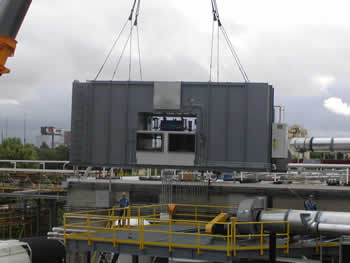 It is best to first familiarize yourself with your technology selection from an operational point of view, and then consider space requirements afterwards.If possible, include a rough building floor plan sketch in your RFQ that shows the location of important production equipment in relation to the proposed location for the emission control system.
It is best to first familiarize yourself with your technology selection from an operational point of view, and then consider space requirements afterwards.If possible, include a rough building floor plan sketch in your RFQ that shows the location of important production equipment in relation to the proposed location for the emission control system.While a rough sketch provides an overview of space requirements, detailed site installation plans are required to define the layout of ductwork, the collection system, exhaust stack height, gas piping, length of power wiring, etc.
Again, while space requirements should be considered, your technology selection should not be heavily influenced by the flooring plan since most emission control systems are installed outdoors and placed on the ground, roof and/or on an elevated steel platform structure
Emission Control System Sizes: Most systems generally range from 8 feet wide x 20 feet long, weighing 8,000 lbs. to 40 feet wide x 60 feet long, weighing 180,000 lbs. and larger. Ultimately, the size of the system is dependent upon the process airflow requirements.
- Location of the VOC System
-
- Turnkey Installation Assistance
Many thermal oxidizer manufacturers and emission control vendors install their VOC systems under a turnkey contract where the vendor takes responsibility for all aspects of start-up and installation. Alternatively, installation assistance can be provided when it is preferred that company staff install the system in-house.
- Turnkey Installation Assistance
- Maintenance Costs & Preventative Maintenance (PM)
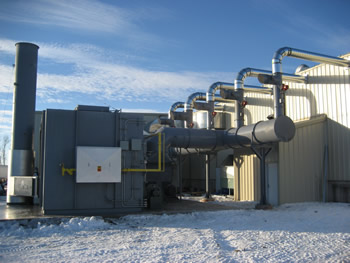 Over the years, maintenance costs have become dramatically lower as a result of reputable vendors installing reliable systems.Long-term costs: In the event a major failure was to take place, long-term repair costs could vary greatly between different technologies:
Over the years, maintenance costs have become dramatically lower as a result of reputable vendors installing reliable systems.Long-term costs: In the event a major failure was to take place, long-term repair costs could vary greatly between different technologies:System: Catalytic Oxidizer
Possible Failure: CatalystSystem: Recovery System
Possible Failure: Carbon bedsSystem: Regenerative Thermal Oxidizer
Possible Failure: Airflow switching valves or media support structurePreventative maintenance (PM) can reduce the risk of major repairs and insure long-term operation. There are several options to implement PM:
Option 1) Train in-house maintenance personnel to adhere to a stringent PM program.
Option 2) An annual PM program can be purchased from the VOC abatement manufacturer/vendor.
IN CONCLUSION
Over time, clean air requirements have become increasingly enforced, more regulated and more stringent. This guide should help you define your requirements and find a technology that meets and even exceeds your requirements.
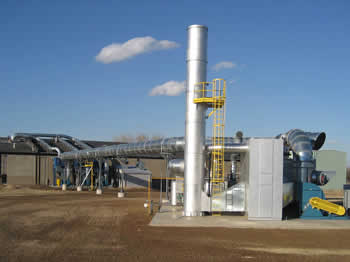 Whether you are upgrading an older system or installing a new system, as energy costs rise, these systems can help reduce your energy costs associated with operating an emission control system.
Whether you are upgrading an older system or installing a new system, as energy costs rise, these systems can help reduce your energy costs associated with operating an emission control system.
Modern equipment such as high efficiency heat exchangers, industrial grade blowers and natural gas fired burners now incorporate components that allow companies to enjoy a short-term payback on their capital investment, regardless of the type of installation – both in new installations and replacement of older systems.
Significant energy savings can impact a company’s bottom line, particularly when retrofitting a secondary recovery unit to an older system.
We hope this guide has been helpful to you. If you still need assistance in selecting the best technology for your specific needs, contact The CMM Group online or call our office at (920) 336-9800. We can provide you with estimated operating/maintenance costs and submit a formal proposal with firm pricing specifics.
While a prepackaged VOC abatement system may be sufficient for some, in many cases, you’ll get an enhanced system through a customized solution at no additional cost.



